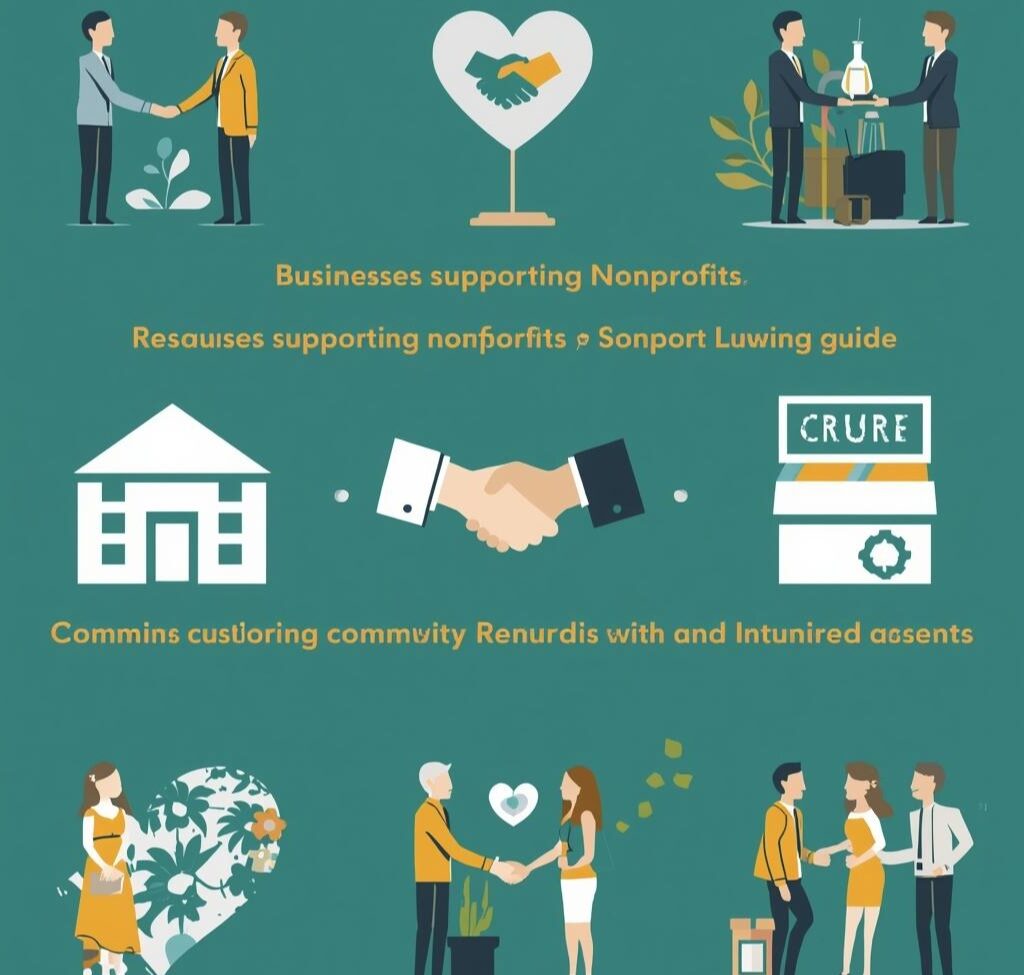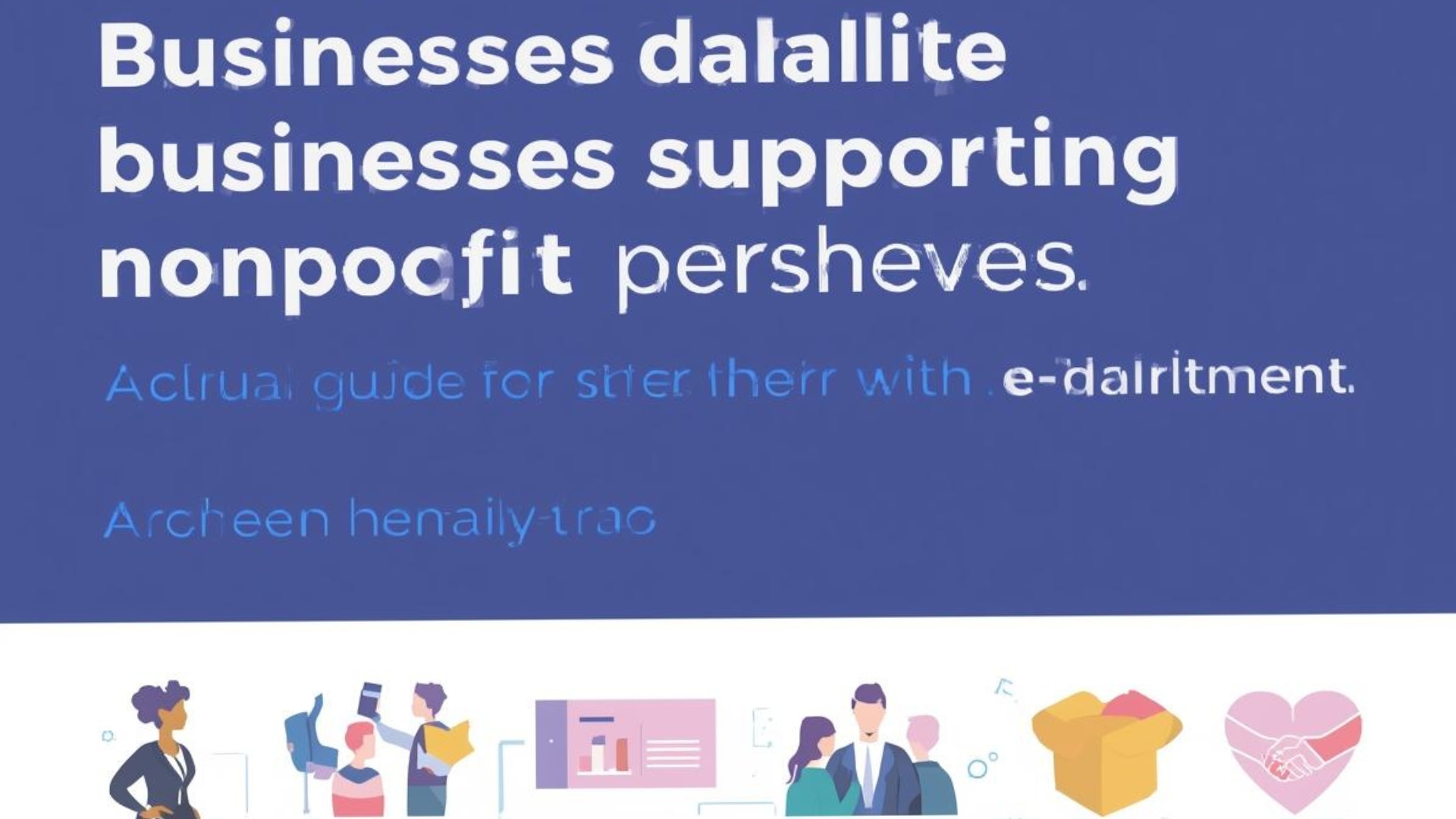Corporate giving is when Businesses donate to Nonprofits. Companies donate funds, products, or services. This support is a key part of their social responsibility. It helps build stronger communities for everyone.
Next, studies show corporate philanthropy is growing quickly. Analysts report that companies now give more than ever before. A key trend is strategic giving. Businesses support causes that match their brand values. Also, employee-led programs are becoming more common.
Finally, effective partnerships create shared success. Nonprofits can proactively seek corporate allies. Businesses can view nonprofits as expert partners. Together, they can co-create programs, solve social problems, and report their impact with transparency.
Understanding Corporate Giving
Corporate philanthropy is the act of a business promoting the welfare of others. This usually happens through charitable donations of funds or resources. These programs come in many forms. They are a key part of corporate social responsibility (CSR). First, companies may offer direct cash grants. These grants support a nonprofit’s mission. They can fund specific projects or general operations. Next, businesses provide in-kind donations. These are non-cash gifts. They can include products, services, or equipment.
Also, many companies have employee matching gift programs. A business will match an employee’s personal donation to a nonprofit. This effectively doubles the employee’s contribution. Corporate volunteer grants are another popular model. Companies donate money to a nonprofit where their employees volunteer their time.

Why Businesses Donate to Nonprofits
Companies have several motivations for philanthropy. These reasons benefit the business. They also benefit the community. A primary reason is to enhance brand reputation. Consumers often prefer to support businesses that give back. Positive public perception can increase customer loyalty.
Another reason is employee morale. Employees feel proud to work for a company that values community support. This can improve employee engagement. It also helps with talent attraction and retention. Also, corporate giving creates stronger communities. Healthy communities provide a better business environment. They offer a more stable workforce. They create a more prosperous customer base. This is a long-term investment in the company’s own success.
Finally, there are tax benefits. Governments often provide tax deductions for charitable contributions. While this is a benefit, it is rarely the sole motivation. The strategic benefits of reputation and employee engagement are often more significant.
Current Data and Trends in Corporate Giving
Corporate philanthropy is a significant part of total charitable giving. Recent data shows strong growth in this area. Corporate giving has a five-year growth rate of 14.3%. This is more than double the growth rate for total giving over the same period. [Source 1] This shows companies are increasing their commitment to social causes. The top ten corporations alone donate over $2 billion in cash to nonprofits each year.
A major trend is the focus on strategic alignment. Businesses increasingly donate to causes that align with their brand values. A technology company might support STEM education. A sporting goods brand might fund youth sports programs. This makes the giving feel more authentic. Another trend is the growth of employee-led giving. Matching gift and volunteer grant programs empower employees. They give workers a say in their company’s philanthropic efforts. This decentralizes giving decisions. It also increases overall participation.
Examples of Companies with Giving Programs
Many well-known businesses have robust donation programs. These companies operate across various industries. Microsoft is a leader in corporate philanthropy. The company and its employees donate billions annually. They focus on providing technology to nonprofits. They also have a large employee matching gift program.
Chevron is another example. The energy company invests in community programs. It focuses on health, education, and economic development. Chevron partners with local organizations to create a positive impact. Starbucks supports communities through its foundation. The Starbucks Foundation provides grants to nonprofits. It focuses on areas like youth opportunity and farmer support. The company also donates food to local food banks. These are just a few examples of the thousands of businesses that donate to nonprofits.
How Nonprofits Can Partner with Companies
Nonprofits can proactively seek corporate partnerships. This requires research and a strategic approach. First, identify potential partners. Look for companies whose values align with your mission. A local environmental nonprofit could partner with a company focused on sustainability. Research businesses operating in your community.
Next, build relationships. Corporate giving is often relationship-based. Attend local business events. Connect with company leaders on professional networks. Show them how your work benefits the community where their employees live and work. Then, create a compelling proposal. Clearly explain your nonprofit’s mission. Describe the specific project you need funding for. Detail the impact a donation will have. Tailor your proposal to the company’s interests. Also, explore different types of support. Do not just ask for cash. In-kind donations of products or services can be valuable. Volunteer support from the company’s employees can also help you achieve your goals.
Understanding Compliance and Tax Basics
Both businesses and nonprofits must follow rules. The Internal Revenue Service (IRS) has specific guidelines for charitable contributions. For businesses, donations to qualified 501(c)(3) organizations are generally tax-deductible. A business must keep records of its donations. These records include receipts from the nonprofit. The amount of the deduction may be limited based on the corporation’s income.
For nonprofits, acknowledging donations is crucial. A nonprofit must provide a written acknowledgment for any single contribution of $250 or more. The acknowledgment must state whether the nonprofit provided any goods or services in exchange for the contribution. Maintaining 501(c)(3) status is essential for receiving tax-deductible donations. Transparency is important for both parties. Businesses should be clear about their giving criteria. Nonprofits must be transparent about how they use donated funds. This builds trust. It ensures the partnership is effective.
How Consumers Can Evaluate Claims
Consumers are growing more interested in corporate responsibility. They can evaluate a company’s giving claims. First, look for specifics. Vague statements like “we support our community” are not very informative. Look for details on which organizations the company supports. See if they share how much they donate.
Next, check for transparency. Reputable companies often publish annual social responsibility reports. These reports detail their philanthropic activities. They provide data on donations and volunteer hours. Also, look at the partnerships. See if the company partners with established, reputable nonprofits. This can be a sign of a credible giving program. You can visit the nonprofit’s website to see if they list the company as a partner.
Finally, consider the alignment. Does the company’s giving align with its business practices? Authentic giving is integrated into the company’s culture. It is not just a marketing tactic.
A Path Forward for Partnerships
Corporate giving is evolving. It is becoming more strategic. It is more integrated with business goals. This creates a unique opportunity. Businesses can move beyond simple check-writing. Nonprofits can move beyond simple grant applications.
The future lies in co-creation. Businesses and nonprofits should work together. They can design programs that solve specific social problems. A technology company and a literacy nonprofit could co-create an app that teaches reading. A food company and a community garden could develop a program to fight local hunger. This approach requires a new mindset. Businesses must see nonprofits as expert partners. Nonprofits must see businesses as strategic allies. Together, they can create shared value. They can build stronger communities. They can also achieve their own organizational goals in a more meaningful way.

